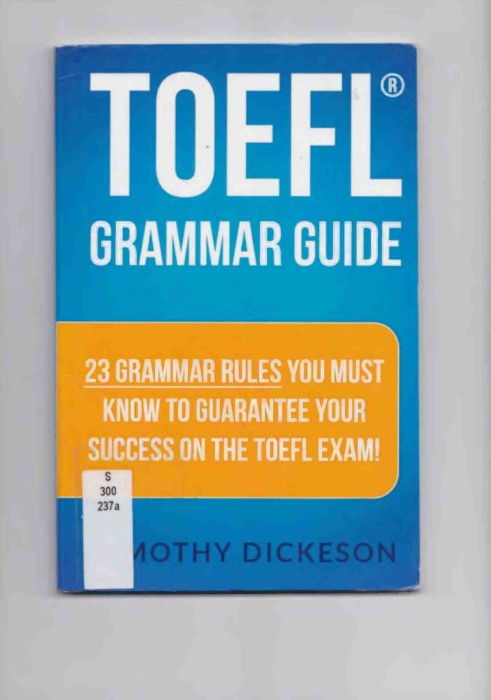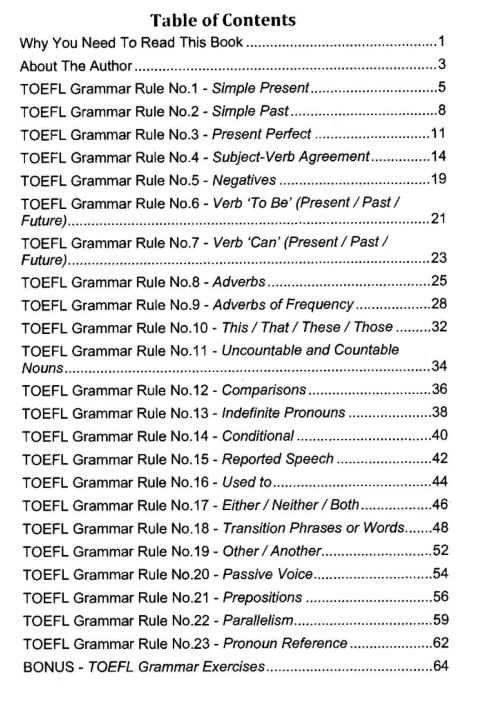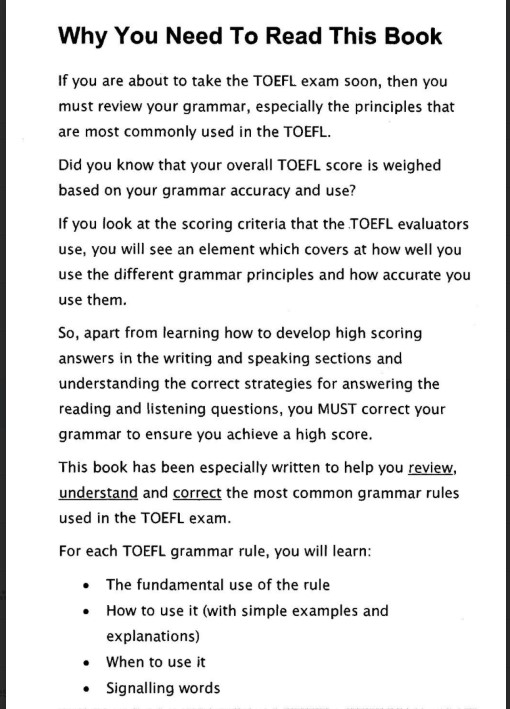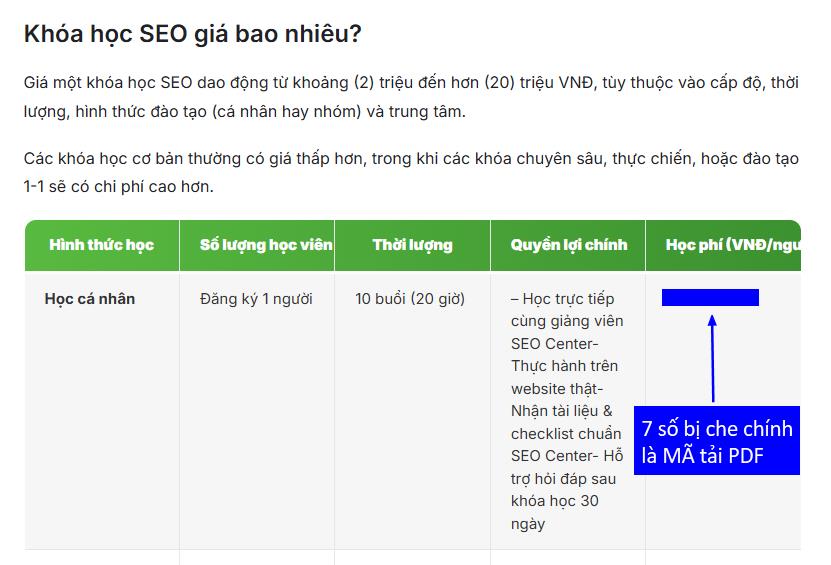


Image 1: Table of Contents
Table of Contents
Why You Need to Read This Book……………………………………………………………………….1
About the Author……………………………………………………………………………………….3
TOEFL Grammar Rule No.1 – Simple Present………………………………………………………..5
TOEFL Grammar Rule No.2 – Simple Past……………………………………………………………..8
TOEFL Grammar Rule No.3 – Present Perfect…………………………………………………………11
TOEFL Grammar Rule No.4 – Subject-Verb Agreement…………………………………………….14
TOEFL Grammar Rule No.5 – Negatives………………………………………………………………19
TOEFL Grammar Rule No.6 – Verb ‘To Be’ (Present / Past / Future)……………………………..21
TOEFL Grammar Rule No.7 – Verb ‘Can’ (Present / Past / Future)……………………………….23
TOEFL Grammar Rule No.8 – Adverbs………………………………………………………………..25
TOEFL Grammar Rule No.9 – Adverbs of Frequency……………………………………………….28
TOEFL Grammar Rule No.10 – This / That / These / Those……………………………………….32
TOEFL Grammar Rule No.11 – Uncountable and Countable Nouns…………………………..34
TOEFL Grammar Rule No.12 – Comparisons………………………………………………………..36
TOEFL Grammar Rule No.13 – Indefinite Pronouns……………………………………………….38
TOEFL Grammar Rule No.14 – Conditional…………………………………………………………..40
TOEFL Grammar Rule No.15 – Reported Speech……………………………………………………42
TOEFL Grammar Rule No.16 – Used to………………………………………………………………44
TOEFL Grammar Rule No.17 – Either / Neither / Both…………………………………………..46
TOEFL Grammar Rule No.18 – Transition Phrases or Words…………………………………..48
TOEFL Grammar Rule No.19 – Other / Another…………………………………………………..52
TOEFL Grammar Rule No.20 – Passive Voice…………………………………………………………54
TOEFL Grammar Rule No.21 – Prepositions…………………………………………………………56
TOEFL Grammar Rule No.22 – Parallelism…………………………………………………………..59
TOEFL Grammar Rule No.23 – Pronoun Reference…………………………………………………62
BONUS – TOEFL Grammar Exercises……………………………………………………………….64
Image 2: TOEFL Grammar Rule No.1 – Simple Present (Part 1)
TOEFL Grammar Rule No.1 – Simple Present
Description:
Simple present is a tense that is used to express an idea that occurs ‘usually’ or is repeated continuously. Some examples are daily events, a habit or something that often happens.
How to Use It:
VERB + s/es (in the third person)
For example > “She speaks English”, “I like salad”, “They don’t like fish”
The Simple present is easy to conjugate with Regular verbs because they all finish in the same form. For example, the verb ‘to eat’:
| Subject | Conjugated Verb |
| I | Eat |
| You | Eat |
| She/He | Eats |
| We | Eat |
| You (plural) | Eat |
Image 3: TOEFL Grammar Rule No.1 – Simple Present (Part 2)
However, Irregular verbs do NOT follow this pattern. For example, the verb ‘to be’:
| Subject | Conjugated Verb |
| I | Am |
| You | Are |
| She/He | Is |
| We | Are |
| You (plural) | Are |
| They | Are |
When to Use It:
Here are the 4 ways to use it
- Repeated actions > “I go to the gym on Monday and Thursday”
- Permanent states > “The Sun rises in the morning”
- Scheduled events in the near future > “The plane leaves at 6am tomorrow”
- Now (non-continuous) > “I am here now”
Signalling Words:
Frequency Adverbs: Always, never, sometimes, Once/Twice a week/month etc.
Important Tips:
Many people make the mistake of combining the present continuous with the simple present.
These forms are INCORRECT:
“She running fast”
“I am go to the mountains”
These forms are CORRECT:
“She is running fast”
“I am going to the mountains”


